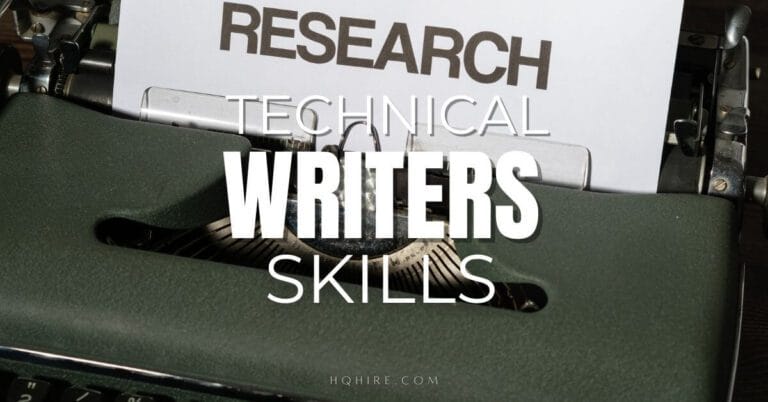Drafters play a vital role in various industries, transforming ideas and concepts into precise technical drawings and designs. Their work serves as a foundation for construction, manufacturing, and engineering projects.
To excel in this field, drafters need to possess a diverse range of skills, both interpersonal and professional. These are some of the most important soft skills and hard skills not only will help you in your career, but help you grow within your field of work. In this article, we will explore the essential skills that drafters should develop and master to thrive in their careers.
Interpersonal Skills for Drafters
Effective Communication
- Drafters must have strong written and verbal communication skills to convey technical information accurately.
- They should be able to interpret complex instructions and specifications provided by clients, engineers, and architects.
- Clear communication ensures that all stakeholders are on the same page, reducing the risk of errors and misunderstandings.
Collaboration and Teamwork
- Drafters often work within multidisciplinary teams, collaborating with professionals from different fields.
- They must be adept at coordinating with engineers, architects, and project managers to ensure seamless integration of their designs.
- Effective teamwork leads to efficient project execution and successful outcomes.
Active Listening
- Active listening is a crucial skill for drafters, as it allows them to understand client requirements and project specifications.
- By paying attention and seeking clarification when needed, drafters can create designs that align with the client’s vision.
- Asking relevant questions helps clarify any ambiguities and ensures accuracy in the drafting process.
Adaptability
- Drafters need to be adaptable and flexible in their approach, as project requirements can change throughout the design process.
- They should be open to learning new software and technologies to stay updated with industry advancements.
- Adaptability enables drafters to respond effectively to evolving project needs, delivering high-quality designs within tight deadlines.
Professional Skills for Drafters
Technical Proficiency
- Mastery of computer-aided design (CAD) software is a fundamental skill for drafters. Proficiency in software like AutoCAD, SolidWorks, or Revit is essential.
- Drafters should be knowledgeable about industry-specific drafting standards and practices, ensuring compliance with regulations and requirements.
Attention to Detail
- Attention to detail is paramount in the drafting profession. Drafters must meticulously review and revise their drafts to ensure accuracy and precision.
- A small oversight in a design can have significant consequences, leading to errors in construction or manufacturing processes.
Problem-Solving Abilities
- Drafters encounter various design challenges and conflicts during projects. They need to possess strong problem-solving skills to identify and resolve issues.
- By analyzing and finding creative solutions within project constraints, drafters can overcome obstacles and deliver optimal designs.
Time Management
- Effective time management is crucial for drafters, as they often work on multiple projects simultaneously.
- Prioritizing tasks, setting realistic deadlines, and efficiently organizing drafting activities ensures timely completion of projects.
Analytical Thinking
- Drafters need to interpret technical specifications and requirements accurately to develop precise designs.
- Analytical thinking enables them to evaluate design feasibility, identify potential improvements, and make informed decisions throughout the drafting process.
What Does It Mean To Become a Successful Drafter
Mastering the skills required to be a successful drafter is essential for professional growth and career advancement.
Interpersonal skills such as effective communication, collaboration, active listening, and adaptability enable drafters to work seamlessly with clients and project teams.
On the other hand, professional skills such as technical proficiency, attention to detail, problem-solving abilities, time management, and analytical thinking ensure the production of accurate and high-quality designs.
Aspiring drafters should strive to continuously improve and hone these skills through practice, training programs, and staying updated with industry trends.
By developing and showcasing these skills, drafters can position themselves for success in their careers, contributing to the realization of remarkable construction, manufacturing, and engineering projects.
Job Description Example
Drafter Job Description
We are seeking a skilled and detail-oriented Drafter to join our Architecture and Construction team. As a Drafter, you will play a vital role in creating accurate and precise technical drawings and plans based on architectural designs.
Your expertise will contribute to the successful execution of construction projects while ensuring compliance with building codes and regulations. If you have a passion for transforming concepts into tangible designs and possess strong technical skills, we encourage you to apply.
Responsibilities
- Create and revise architectural drawings, including floor plans, elevations, and sections, using computer-aided design (CAD) software.
- Collaborate with architects, engineers, and project managers to understand project requirements and translate them into detailed drawings.
- Incorporate design changes and modifications accurately and promptly, adhering to project timelines.
- Ensure drawings comply with relevant building codes, regulations, and industry standards.
- Perform site visits to gather measurements and information for accurate drafting.
- Maintain organized and up-to-date drawing files, ensuring proper version control.
- Assist in the preparation of construction documents, including detailed specifications and material lists.
- Review drawings and models to identify potential design or construction conflicts and propose solutions.
- Stay updated with emerging design and drafting technologies, recommending improvements to enhance efficiency and quality.
- Collaborate effectively with multidisciplinary teams, providing technical support and coordination throughout the project lifecycle.
Key Requirements
- Proficiency in computer-aided design (CAD) software, such as AutoCAD or Revit.
- Strong understanding of architectural and construction principles, including building codes and regulations.
- Excellent attention to detail and accuracy in creating technical drawings.
- Ability to interpret architectural plans, sketches, and specifications effectively.
- Solid knowledge of construction materials, methods, and techniques.
- Familiarity with 3D modeling software and visualization tools is advantageous.
- Effective time management and organizational skills to meet project deadlines.
- Strong communication and interpersonal abilities for effective collaboration within cross-functional teams.
- Adaptability to work on multiple projects simultaneously and handle changing priorities.
- A degree or diploma in architectural drafting or a related field is preferred, but relevant work experience will also be considered.
We’ve one question…
Did we miss out on any critical skills needed?
Let us know in the comments below!
Looking to explore different careers? Come and visit our most comprehensive list of architecture and construction related careers.
Here, you can also find all other career paths with their career education requirement and mode of work there!
Read Also:
- 25 Best Online Collaboration Tools for Remote Teams in 2024 (Business & Managers)
- Online Collaboration For Remote Teams (Complete Guide)
- 5 Minutes Online Meeting Games to Foster Teamwork and Engagement Remotely
- 11 Benefits for Getting a Remote Job: Unlocking Flexibility and Freedom
- 6 Types of Online Meetings in The Workplace (Pros & Cons)
Join over 11,000+ achievers who are committed to achieving their career goals!







